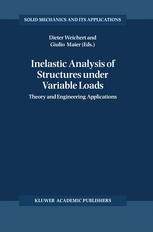

Most ebook files are in PDF format, so you can easily read them using various software such as Foxit Reader or directly on the Google Chrome browser.
Some ebook files are released by publishers in other formats such as .awz, .mobi, .epub, .fb2, etc. You may need to install specific software to read these formats on mobile/PC, such as Calibre.
Please read the tutorial at this link: https://ebookbell.com/faq
We offer FREE conversion to the popular formats you request; however, this may take some time. Therefore, right after payment, please email us, and we will try to provide the service as quickly as possible.
For some exceptional file formats or broken links (if any), please refrain from opening any disputes. Instead, email us first, and we will try to assist within a maximum of 6 hours.
EbookBell Team

4.7
56 reviewsThe question whether a structure or a machine component can carry the applied loads, and with which margin of safety, or whether it will become unserviceable due to collapse or excessive inelastic deformations, has always been a major concern for civil and mechanical engineers. The development of methods to answer this technologically crucial question without analysing the evolution of the system under varying loads, has a long tradition that can be traced back even to the times of emerging mechanical sciences in the early 17th century. However, the scientific foundations of the theories underlying these methods, nowadays frequently called "direct", were established sporadically in the Thirties of the 20th century and systematically and rigorously in the Fifties. Further motivations for the development of direct analysis techniques in applied mechanics of solids and structures arise from the circumstance that in many engineering situations the external actions fluctuate according to time histories not a priori known except for some essential features, e.g. variation intervals. In such situations the critical events (or "limit states") to consider, besides plastic collapse, are incremental collapse (or "ratchetting") and alternating plastic yielding, namely lack of "shakedown". Non evolutionary, direct methods for ultimate limit state analysis of structures subjected to variably-repeated external actions are the objectives of most papers collected in this book, which also contains a few contributions on related topics.